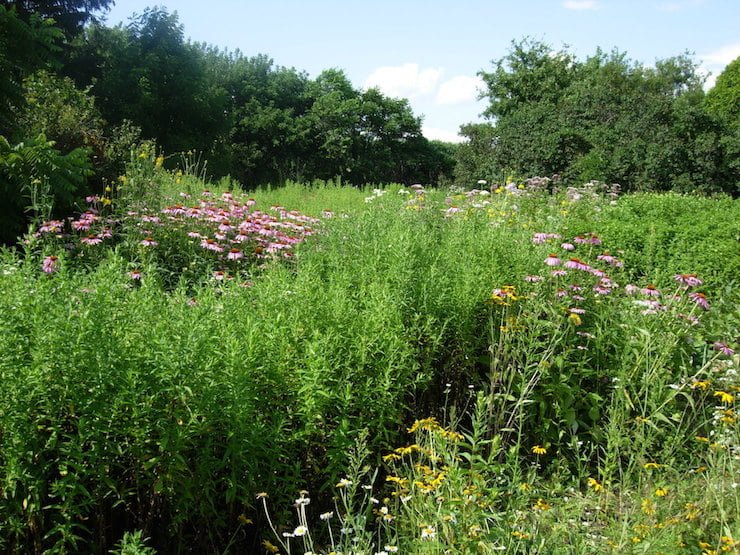Ten Themes include all areas of direct action for sustainability. They are:

Themes make sustainability easy to understand
Because Themes are concrete and relate to a specific area of activity, they make sustainability easy to understand. Yet they are broad enough to bring together people to discuss common areas of interest (see photo below). For example, an Ottawa, Canada, workshop on Health featured discussions on: pollution, urban trees, safe streets, parks for the handicapped, and indoor air quality.

Organic Farmer and Café owner at a BEC Food Workshop. Photo. E. Nadolny
Themes lead to sustainability projects, by connecting organizations that would like to address similar issues. Themes and sub-Themes are a framework for sharing information on those topics. These connections may lead to partnerships, or other forms of project support.
Themes can improve analysis of public plans too. For example, a Theme-based analysis of a proposed urban green space might lead to these types of questions:
- Habitat – will it accommodate native plants and pollinators?
- Food – can it support an urban food system?
- Recreation – will it fit into a system of sustainable recreation?
- Sense of Place – can it be a good meeting place for residents?

Sense of Place. Stratford, Ontario. Photo: J. Birtch
Projects may contain more than one Theme. For instance, street redevelopment could address both Transportation and Health (safety). Or methane collection for electricity generation, at a landfill (dump), would address both Waste and Energy.
Where there is more than one Theme in a project, they can be used to break-out the various benefits of the project.
To read discussion papers on Themes, go to Theme pictures on the home page.

